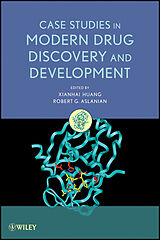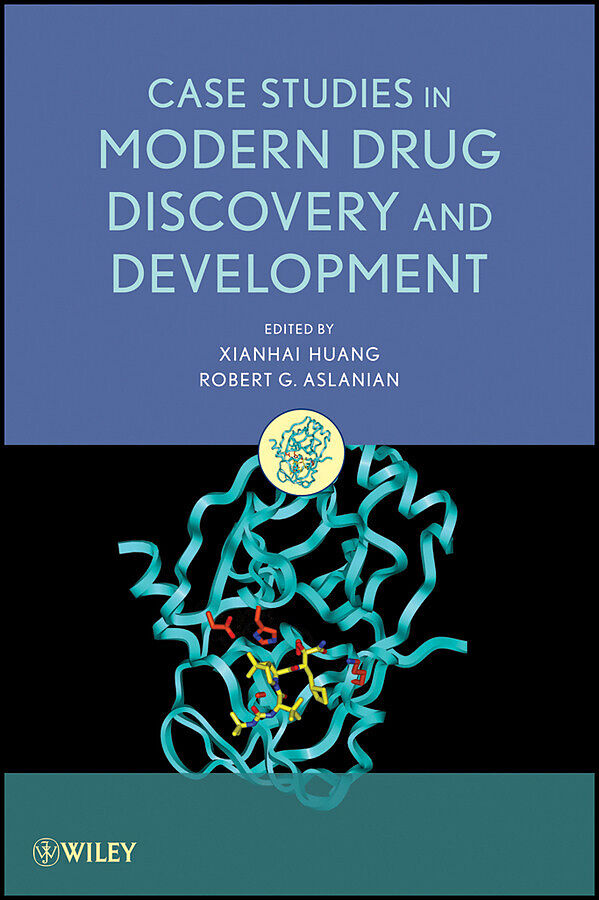Case Studies in Modern Drug Discovery and Development
Einband:
E-Book (epub)
EAN:
9781118219676
Untertitel:
Englisch
Genre:
Chemie
Herausgeber:
Wiley
Anzahl Seiten:
472
Erscheinungsdatum:
19.04.2012
ISBN:
978-1-118-21967-6
Learn why some drug discovery and development efforts succeed . . . and others fail
Written by international experts in drug discovery and development, this book sets forth carefully researched and analyzed case studies of both successful and failed drug discovery and development efforts, enabling medicinal chemists and pharmaceutical scientists to learn from actual examples. Each case study focuses on a particular drug and therapeutic target, guiding readers through the drug discovery and development process, including drug design rationale, structure-activity relationships, pharmacology, drug metabolism, biology, and clinical studies.
Case Studies in Modern Drug Discovery and Development begins with an introductory chapter that puts into perspective the underlying issues facing the pharmaceutical industry and provides insight into future research opportunities. Next, there are fourteen detailed case studies, examining:
* All phases of drug discovery and development from initial idea to commercialization
* Some of today's most important and life-saving medications
* Drugs designed for different therapeutic areas such as cardiovascular disease, infection, inflammation, cancer, metabolic syndrome, and allergies
* Examples of prodrugs and inhaled drugs
* Reasons why certain drugs failed to advance to market despite major research investments
Each chapter ends with a list of references leading to the primary literature. There are also plenty of tables and illustrations to help readers fully understand key concepts, processes, and technologies.
Improving the success rate of the drug discovery and development process is paramount to the pharmaceutical industry. With this book as their guide, readers can learn from both successful and unsuccessful efforts in order to apply tested and proven science and technologies that increase the probability of success for new drug discovery and development projects.
Autorentext
Xianhai Huang, PhD, is a Principal Scientist at Merck Research Laboratories. Dr. Huang is the inventor or co-inventor on more than forty patents and patent applications. As a mentor in the Schering-Plough chemistry postdoctoral program, Dr. Huang and his group discovered novel synthetic applications of (diacetoxyiodo) benzene and successfully applied the methodology to the total synthesis of psymberin, an antitumor natural product. Robert G. Aslanian, PhD, is an adjunct professor of chemistry at William Paterson University and was formerly a Senior Director of Medicinal Chemistry with the Schering-Plough Research Institute and Merck Research Laboratories. Dr. Aslanian has over twenty-five years of experience in the pharmaceutical industry. He is co-inventor on thirty-eight U.S. patents and coauthor on sixty-seven scientific articles and reviews.
Inhalt
Preface xv Contributors xvii Chapter 1 Introduction: Drug Discovery in Difficult Times 1
Malcolm MacCoss Chapter 2 Discovery and Development of The DPP-4 Inhibitor Januvia® (SITA-GLIPTIN) 10
Emma R. Parmee, Ranabir SinhaRoy, Feng Xu, Jeffrey C. Givand, and Lawrence A. Rosen 2.1 Introduction 10 2.2 DPP-4 Inhibition as a Therapy for Type 2 Diabetes: Identification of Key Determinants for Efficacy and Safety 10 2.2.1 Incretin-Based Therapy for T2DM 10 2.2.2 Biological Rationale: DPP-4 is a Key Regulator of Incretin Activity 11 2.2.3 Injectable GLP-1 Mimetics for the Treatment of T2DM 12 2.2.4 DPP-4 Inhibition as Oral Incretin-Based Therapy for T2DM 12 2.2.5 Investigation of DPP-4 Biology: Identification of Candidate Substrates 13 2.2.6 Preclinical Toxicities of In-Licensed DPP-4 Inhibitors 15 2.2.7 Correlation of Preclinical Toxicity with Off-Target Inhibition of Pro-Specific Dipeptidase Activity 16 2.2.8 Identification of Pro-Specific Dipeptidases Differentially Inhibited by the Probiodrug Compounds 17 2.2.9 A Highly Selective DPP-4 Inhibitor is Safe and Well Tolerated in Preclinical Species 19 2.2.10 A Highly Selective DPP-4 Inhibitor Does Not Inhibit T-Cell Proliferation in vitro 19 2.2.11 DPP-4 Inhibitor Selectivity as a Key Parameter for Drug Development 20 2.3 Medicinal Chemistry Program 20 2.3.1 Lead Generation Approaches 20 2.3.2 Cyclohexyl Glycine -Amino Acid Series of DPP-4 Inhibitors 20 2.3.3 Improving Selectivity of the-Amino Acid Series 22 2.3.4 Identification and Optimization of the -Amino Acid Series 22 2.4 Synthetic and Manufacturing Routes to Sitagliptin 27 2.4.1 Medicinal Chemistry Route to Sitagliptin and Early Modifications 27 2.4.2 An Asymmetric Hydrogenation Manufacturing Route to Sitagliptin 28 2.4.3 A Greener Manufacturing Route to Sitagliptin Employing Biocatalytic Transamination 31 2.5 Drug Product Development 33 2.5.1 Overview 33 2.5.2 Composition Development 33 2.5.3 Manufacturing Process Development 33 2.6 Clinical Studies 36 2.6.1 Preclinical PD Studies and Early Clinical Development of Sitagliptin 36 2.6.2 Summary of Phase II/III Clinical Trials 38 2.7 Summary 39 References 39 Chapter 3 Olmesartan Medoxomil: An Angiotensin II Receptor Blocker 45
Hiroaki Yanagisawa, Hiroyuki Koike, and Shin-ichiro Miura 3.1 Background 45 3.1.1 Introduction 45 3.1.2 Prototype of Orally Active ARBs 46 3.2 The Discovery of Olmesartan Medoxomil (Benicar) 47 3.2.1 Lead Generation 47 3.2.2 Lead Optimization 49 3.3 Characteristics of Olmesartan 53 3.4 Binding Sites of Omlersartan to the AT1 Receptor and Its Inverse Agonoist Activity 56 3.4.1 Binding Sites of Olmesartan to the AT1 Receptor 56 3.4.2 Inverse Agonist Activity of Olmesartan 56 3.4.3 Molecular Model of the Interaction between Olmesartan and the AT1 Receptor 57 3.5 Practical Preparation of Olmesartan Medoxomil 58 3.6 Preclinical Studies 58 3.6.1 AT1 Receptor Blocking Action 58 3.6.2 Inhibition of Ang II-Induced Vascular Contraction 59 3.6.3 Inhibition of the Pressor Response to Ang II 60 3.6.4 Blood Pressure Lowering Effects 60 3.6.5 Organ Protection 61 3.7 Clinical Studies 62 3.7.1 Antihypertensive Efficacy and Safety 62 3.7.2 Organ Protection 63 3.8 Conclusion 63 References 64 Chapter 4 Discovery of Heterocyclic Phosphonic Acids as Novelampmimics That Are Potent and Selective Fructose-1,6-Bisphosphatase Inhibitors and Elicit Potent Glucose-Lowering Effects in Diabetic Animals and Humans 67
Qun Dang and Mark D. Erion 4.1 Introduction 67

Leider konnten wir für diesen Artikel keine Preise ermitteln ...
billigbuch.ch sucht jetzt für Sie die besten Angebote ...
Die aktuellen Verkaufspreise von 6 Onlineshops werden in Realtime abgefragt.
Sie können das gewünschte Produkt anschliessend direkt beim Anbieter Ihrer Wahl bestellen.
Loading...
Die aktuellen Verkaufspreise von 6 Onlineshops werden in Realtime abgefragt.
Sie können das gewünschte Produkt anschliessend direkt beim Anbieter Ihrer Wahl bestellen.
| # | Onlineshop | Preis CHF | Versand CHF | Total CHF | ||
|---|---|---|---|---|---|---|
| 1 | Seller | 0.00 | 0.00 | 0.00 |
